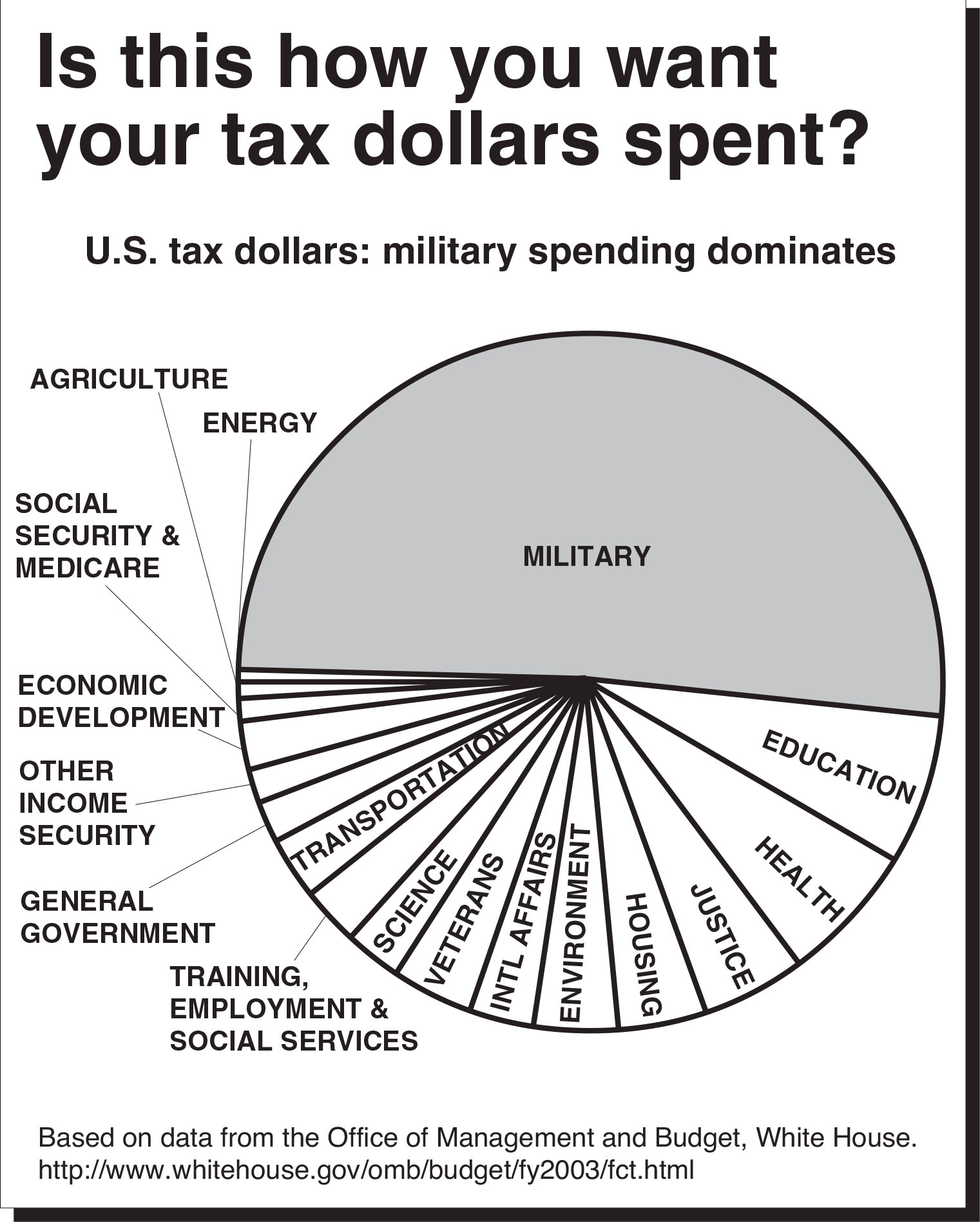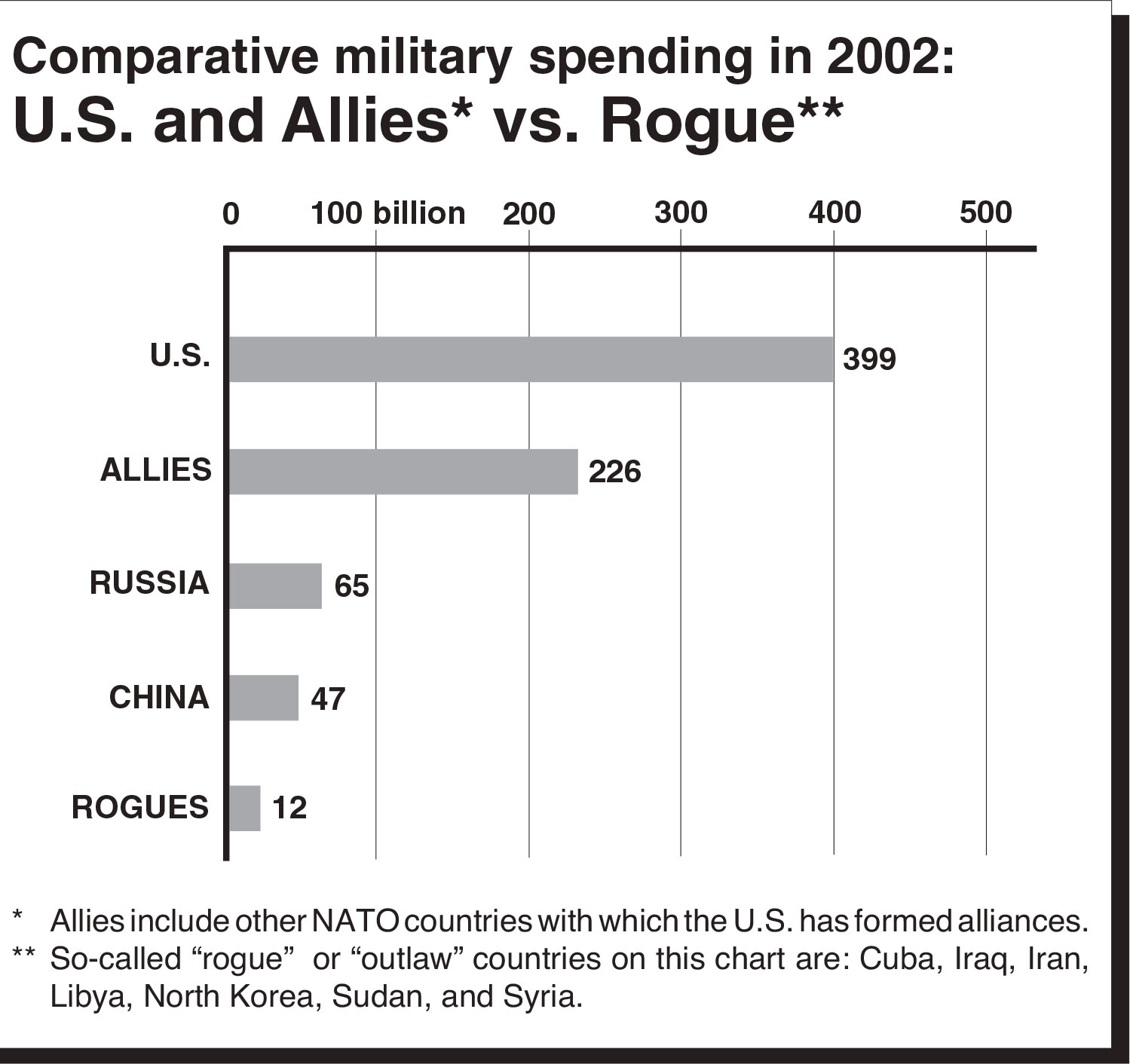While most nations have reduced their military spending—including Russia, which has cut its military spending from $300 billion in 1988 to $45 billion today—the U.S. continues to divert vast sums of our tax dollars to increase military spending. The 2003 military budget of $414 billion is almost equal to the $451 billion that the rest of the world combined spends on defense, and 18 times more than the $22 billion spent by China.
The United States is the only nation to have 250,000 troops stationed in 144 countries around the world, armed with the latest
arsenal of nuclear, biological, and chemical weapons of mass destruction. The U.S. has repeatedly used this military power to extend and protect U.S. corporate interests around the world.
Bush uses 9/11 for own agenda
President Bush has used 9/11 to increase the military budget by 37%, very little of which is used to fight terrorism. Most of the defense budget is going to U.S. corporations as lucrative defense contracts for the next generation of advanced weapons, such as the F-22 fighter plane that costs $100 million a piece, the F-35 joint strike fighter, a new missile defense system, more attack submarines, more B-2 bombers, Comanche helicopters, and naval cruisers. All this is aimed at building the military capability to fight two large scale wars at the same time.
The U.S. contributes to armed conflict and international instability by supplying more than half of the weapons in the world.
The U.S. sold over $152 billion in weapons since 1990 to 160 of the 190 countries—many to oppressive governments that maintain the poverty, injustice, and hopelessness that breeds desperation and makes the U.S. the target of terrorism.


Military Spending dominates budget
The United States spends a huge amount of money for military purposes—an estimated $414 billion for 2003 and prob-
ably more after adding the cost of the war on Iraq and Afghanistan. This is almost equal to the $450 billion spent by the rest of the world combined.
U.S. military spending also dwarfs what the federal government spends on other programs such as education, health, or
housing. The chart below reveals military spending will account for 55 percent of the entire discretionary budget.
The federal budget is divided into two parts—discretionary and mandatory. Mandatory spending is what the government is al-
ready obligated to pay for Social Security, Medicare, food stamps, pensions for federal workers, and interest payments on the national debt. The discretionary budget can be changed from year to year. So when President Bush wants to cut taxes and raise
military spending at the same time, it means that other discretionary programs must be cut—such as education, environment, or transportation.
Military spending—How much is enough?
The United States spends many times more on its military then any other country in the world. In addition, President Bush wants to increase military spending every year to $490 billion by the year 2008.
The U.S. has also formed military alliances with other countries—“Allies” in the chart below. This includes 18 countries
in NATO and separate alliances with countries such as Japan, Australia, and South Korea. This means the combined military
spending of the U.S. and its allies is over $625 billion a year.
In comparison, the handful of countries most often mentioned by President Bush or the State Department as potential enemies
spend less than $12 billion on defense. These countries are called “rogue” in the chart below.

